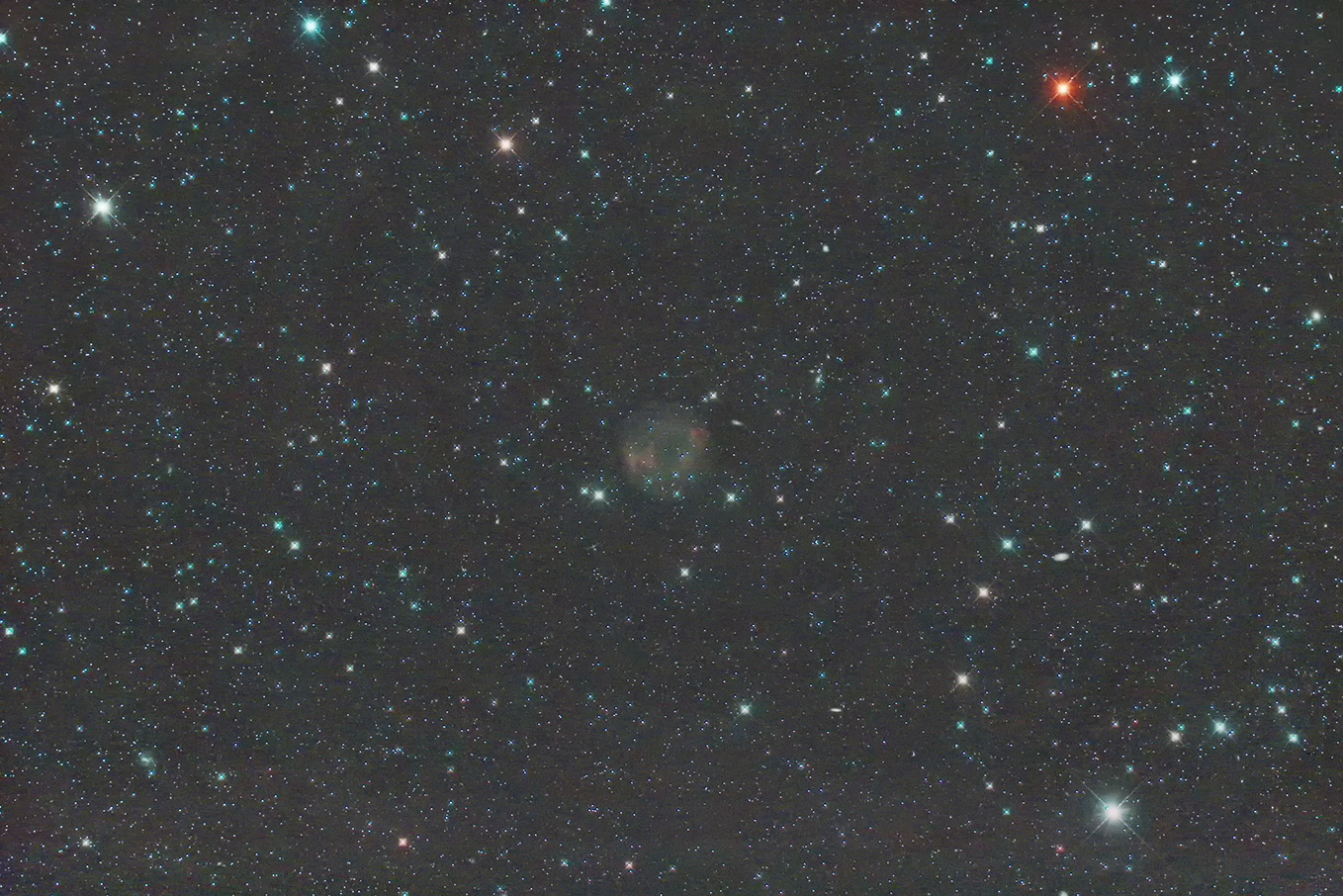| Abell 7 / Planetary Nebula, type IIIa |
|---|
| R.A. | 05h 03m 07.5s (2000.0) |
|---|
| Dec. | -15°36' 23" (2000.0) |
|---|
| Apparent Size | 12.7' |
|---|
| Real Size | 8 light yrs. |
|---|
| Magnitude | 13.2 |
|---|
| Distance | 1800 light yrs. |
|---|
| Other ID | PK 215-30.1 |
|---|
Abell 7 is a large but faint planetary nebula positioned at 2.5 degrees WNW from μ Lep in the western region of the constellation.
The nebula has a visual diameter of a bit smaller than 13 arc minutes and has reddish gaseous lumps in east and west sides.
The appearance seems uneven from this image. The central star visible in this image is a 15.4th magnitude white dwarf, the nebula's age has been estimated as about 20 thousand years.
You can see a glittering red 7th magnitude star in upper right-hand side of this image.
The star is a pulsating variable known as "R Leporis", varying brightness between 5.5th and 11.7th magnitude with a period of about 427 days.
The star has been classified as the "Carbon star", also known as one of the "reddest" stars in heavens.
Named after the discoverer, the star is often called "The Hind's Crimson Star", and has another nickname of "The Vampire's Star".
|

